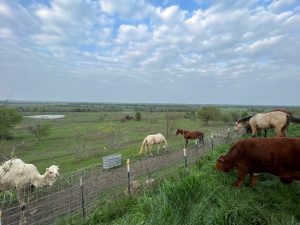Keep Austin Learning! Enjoy this post on UT Austin, submitted by Joyce Matthews, a Maverick Horseback Rider helping contribute to our blog roll on Things to Do in Austin, TX.
In 2017, the US News and World Report ranked this place’s program number 5 in the nation. They also ranked establishment number 2 in archives and preservation, number 2 in legal librarianship, number 5 in digital libraries, and number 10 in information system. These rankings are applicable to none other than The University of Texas at Austin. UT Austin was founded in 1948 as a part of the UT Graduate School, coursework that led to a Master Library Science degree and eventually to a certification for school librarianship. This was one of the main selling points of the school back in the day.
In 1967, the school initiated a sixth year of study, culmination in a certificate of advanced study. In 1969-70, a trans disciplinary doctoral program was added, leading to the degree of Doctor of Philosophy. Soon more and more degrees were added to the school’s curriculum as it became one of the top schools in the nation. This UT system school is located in a vibrant city that is known for its natural beauty, talented and creative people, and its beautiful lakes. These qualities are built into the environment of the University of Texas at Austin.
This college’s School of Information is one the highly prestigious program. As a result, there are several areas within this school that are dedicated for the public to visit and see what makes the School of Information such an outstanding program. Being ranked as one the top schools Texas means it being a lot of research and technology industries that also serves as a hub of the music and film industry.
There is a total of six labs one could go visit to completely understand why this school is ranked as one of the top schools in America. Initially, the IX Lab, also known as the Information eXperience Lab, is a research facility dedicated to the science of information studies. This lab specializes in the empirically-based design of human-information interaction, and the education of graduate students in the process of both. It is also known for its state of the art lab design that are used to conduct experiments on human-information processing and usability, accessibility, and other studies of the interaction between humans and information sources.
The digital archaeology lab is another primary push for research at this school. The digital archeology lab is a vital part of the School of Information’s research and education in digital archiving. This lab proudly displays their stated of the art multiple computer platforms that include a complete forensic workstation, variety of media drivers, current and legacy software for the purpose of recovering digital objects form non-current environments to transfer in into a preservation environment. The information retrieval lab is a branch that was established to advance the state of the art methodologies for search and human computations. The aim of this lab is to integrate crowdsourcing with automatic algorithms to improve search engine experiences, capabilities and evaluations.
The conservation lab on the other hand contains a large variety of tools and equipment used for examination, analysis and photo documentation. Since certain papers have a unique texture and consistency, they even have mechanisms that are used to preserve old documents. A detailed sample collection of more than 10,000 photographs and other materials are displayed to show the contribution of this lab. The sounds rooms are a very specialized labs that holds a very historic background in the school’s history.
There are two sounds rooms located in the IT lab. The sound rooms are small individual rooms with higher-end equipment where people can record and edit audio, edit movies, create tutorials, or even experiment with the latest voice recognition software. Finally, the computer lab is housed at the School of Information Computer Classroom. The classroom offers Windows and OS X computing environments and digitization equipment as well as our general classroom presentation capabilities.


